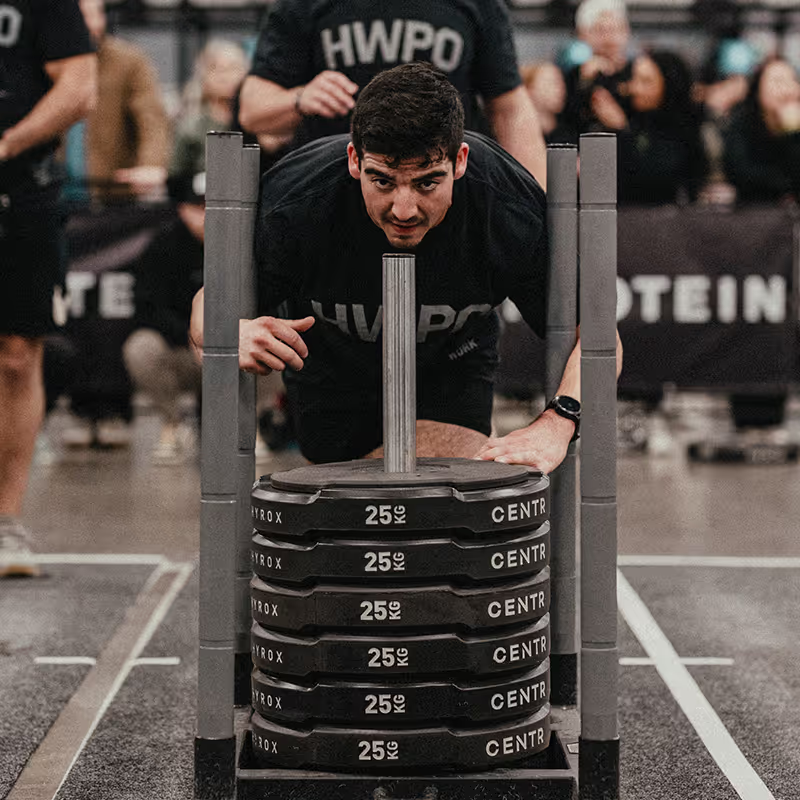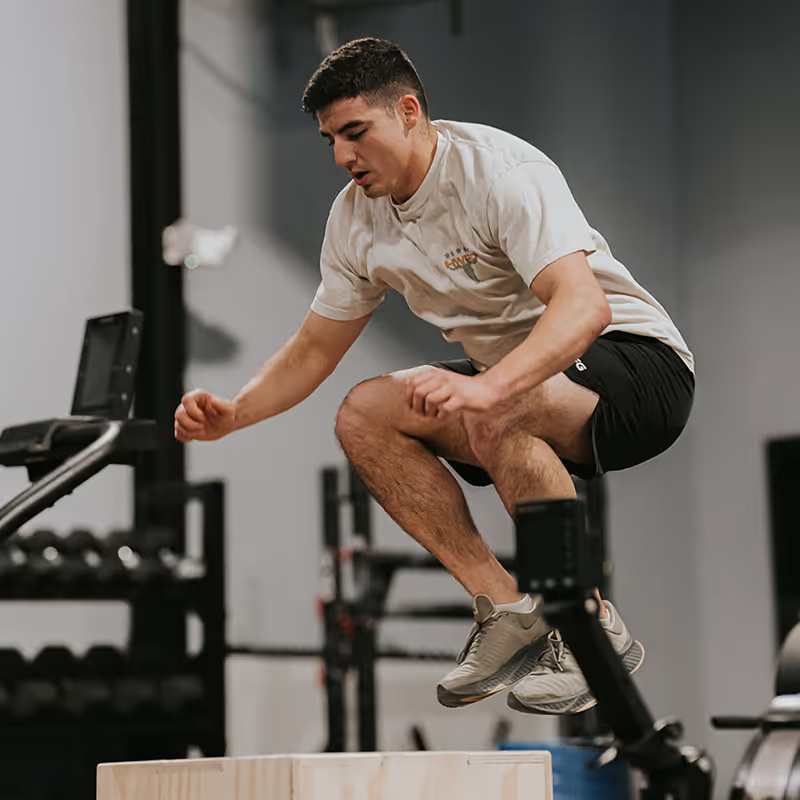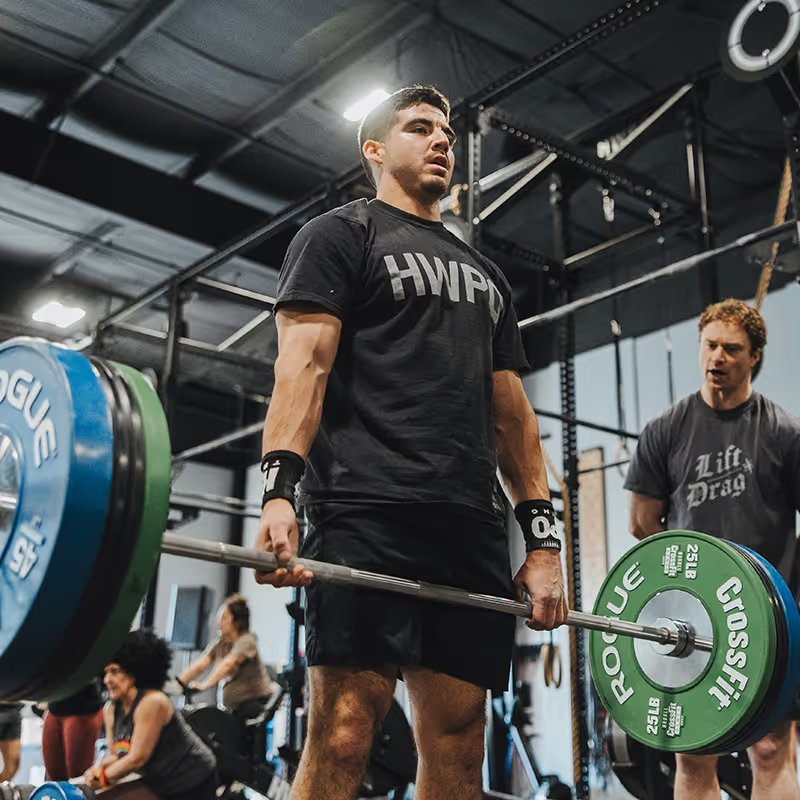Making it count: How to prioritize training when time and energy are tight
When life gets full, your training doesn’t have to fall apart. This blog shares a simple framework for prioritising what matters most, so you can stay consistent without burning out.
Jun 20, 2025
If you have followed a structured training plan–whether through HWPO Training or elsewhere–you have likely come across days where the program is too full for either the energy or the time you have to give towards it. Programs like HWPO FLAGSHIP can feature a strength piece, a metcon, skill work, accessory movements, and even a bonus section–on paper, this can be manageable. In real life, some days, it's a different story.
Time and energy are not unlimited resources. There are busy work days, late nights, kids, insufficient sleep, high stress, or simply the reality that you do not always feel your best. In my own experience, this is something I run into almost daily. I train consistently, but rarely under perfect circumstances. This is normal. As a result, I have become intentional about how I approach training when time and energy are limited.
To optimize your training, the first goal should be to make the training you are doing count.
Remember that doing what matters most beats doing everything.
If your goal is to become fitter, more capable, or more competitive, then the key is to be consistent over time, not to win the day with volume. It is unrealistic to think you will PR everything in every session, but you can organize your efforts so that the right pieces get your best energy. This is where prioritization comes in.
A simple framework for making the most of your training
To prioritize your training effectively when aiming to be as fit as possible, start with your weaknesses on training days, or at least with the areas you are trying to improve the most. Put simply: do what you need the most, first. If you are trying to be the fittest athlete that you can be, and there is a skill, movement, or energy system that holds you back in workouts, then it deserves your highest-quality effort. Often, this means doing a piece that reflects this first in your training session, when your focus and energy are fresh, even if it is listed second, third, or fourth on the training day. It is typically okay to rearrange the order of a program, as long as you are keeping the intent of each piece intact and intentionally prioritizing weaknesses over preferences.
If you are trying to achieve a well-rounded fitness as a CrossFit® athlete and looking for a simple framework on what to prioritize when your time or energy is limited, use the following order:
1. Cardio progressions
If your training includes aerobic work or conditioning intervals that follow a progression (i.e. building volume, intensity, or a pace week to week), prioritize these. The sport of CrossFit® is rooted in the ability to sustain high output over time, and if your engine is not where it needs to be, everything else suffers.
2. Skill work or strength progressions
Next, give attention to any skill (i.e. gymnastics or barbell cycling) or strength work (i.e. back squats or Olympic lifts) that is part of a progression. As many are aware, strength and skill are typically the areas of fitness that take the longest to develop, requiring consistency and cumulative effort. Allowing your strength or skill sessions to slide too often breaks the chain of this development.
3. Accessory work
Accessory work is often where small wins stack up–better positions, stronger support muscles, and injury prevention. Accessories can often be trimmed, shortened, or adapted, but they should not always be the first thing skipped. Especially if they target a known weakness, accessories still matter.
4. Metcons
This might be surprising to some, but in my opinion, CrossFit-style metcons are often prioritized too much. Yes, metcons can be fun and can build capacity, but unless a metcon is testing something you struggle with, your gains from metcons will probably not be as impactful as gains from strength or skill work done under lower fatigue. However, as a small side note, if you are preparing for a CrossFit® competition that is coming up soon on the calendar, metcons should be prioritized higher to be on this list, even to the first spot, as they help to most closely simulate the feeling you will need to be adapted to once the competition begins.
5. Bonus work
As the name suggests, this is the extra. If you have time and energy to do bonus work, go for it. However, if not, you are not missing the most critical pieces that stand in the way of your improvement. Think of bonus work like dessert—nice to have, but it is not the main meal. With this said, if there is skill work embedded into a bonus section that you know hits on a weakness for you, this can be prioritized to be higher in your day.
When in doubt, adjust with purpose
Remember, there is no “perfect” training day. Some weeks you might feel great and do everything, but on others, you can be short on time, energy, or both. The win is not in checking every box–it is in making the work you do matter.
If you need to cut something, do it without guilt. But do this intentionally, not randomly. If you are going to skip a piece, ask yourself: “Is this the most important thing for my goals?”, “Is this something I will get another dose of this week?”, and finally, “Am I avoiding this because it is hard, or because it is unnecessary today?”
More often than not, a slight adjustment to the training on your program done with awareness is better than following a plan that does not match your real life.
These small adjustments can be the key to maximizing the benefits of your program. In line with this, there are no bonus points for doing the most training. Results come by showing up consistently, hitting what matters, and adjusting with purpose. If you are following an HWPO Training program and find yourself unable to get all the training in every day, that is okay. Trust yourself to adjust things as needed, and don't be afraid to make mistakes during this process to refine it over time. After all, the practice of optimizing and prioritizing your training well under real-world constraints is precisely what separates the athletes who improve from those who burn out.
There is no shame in modifying your training day – just be sure to do so with intention. Focus your energy on your biggest growth opportunities, even if that means flipping the script on how a day is laid out. Prioritize your weaknesses, respect progressions, and let everything else fall in line behind that.
At the end of the day, your training does not have to be perfect: it just has to be yours, as consistently as it can be.



Train with purpose, even on your busiest days
HWPO programs are built to help you stay consistent, make progress, and show up, even when life gets in the way.






